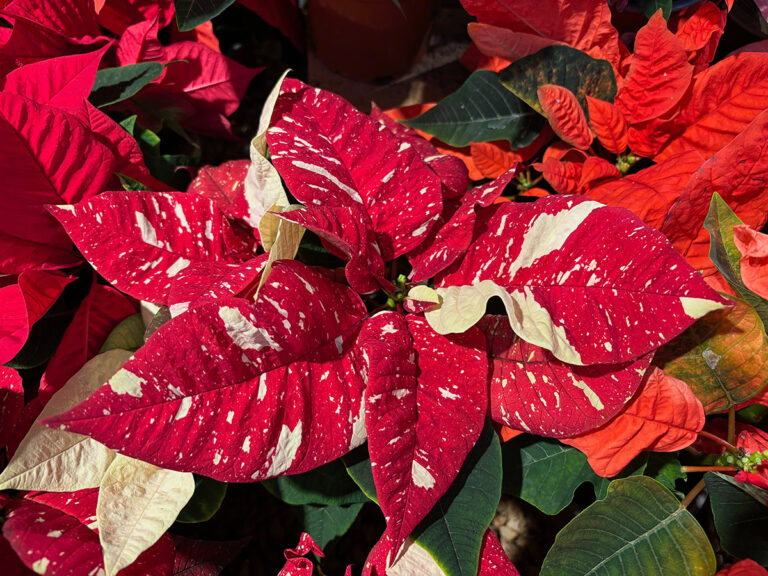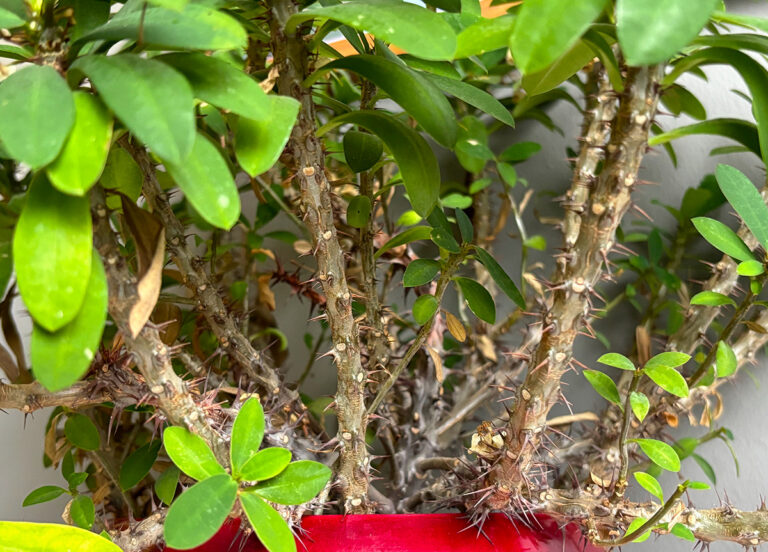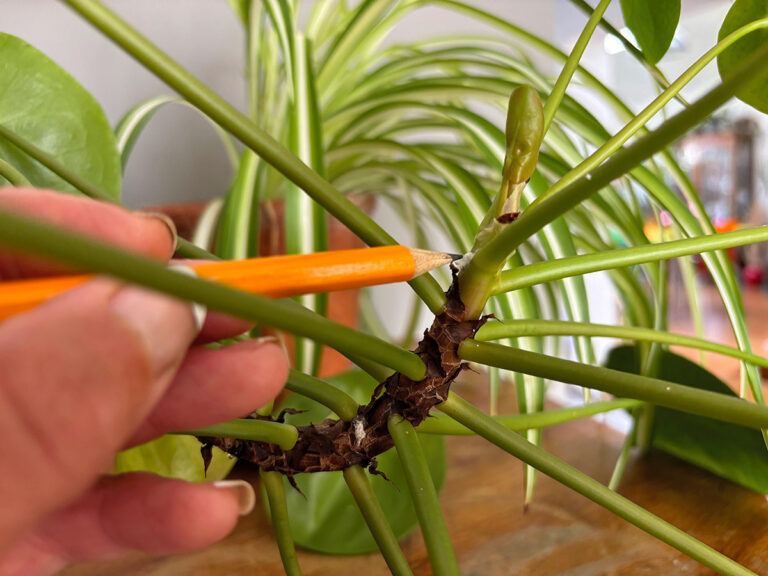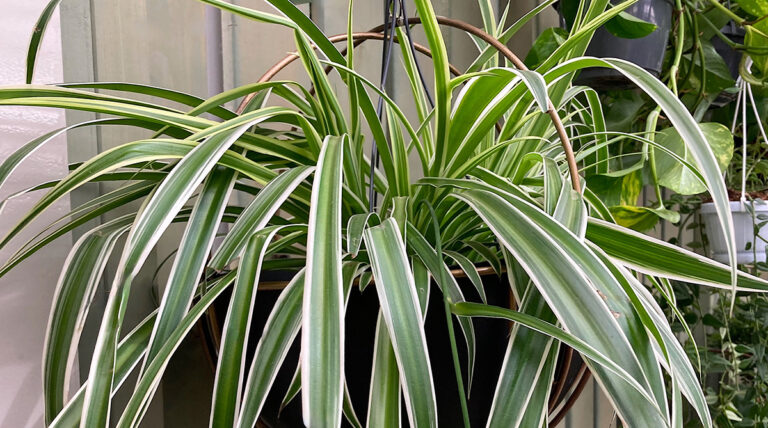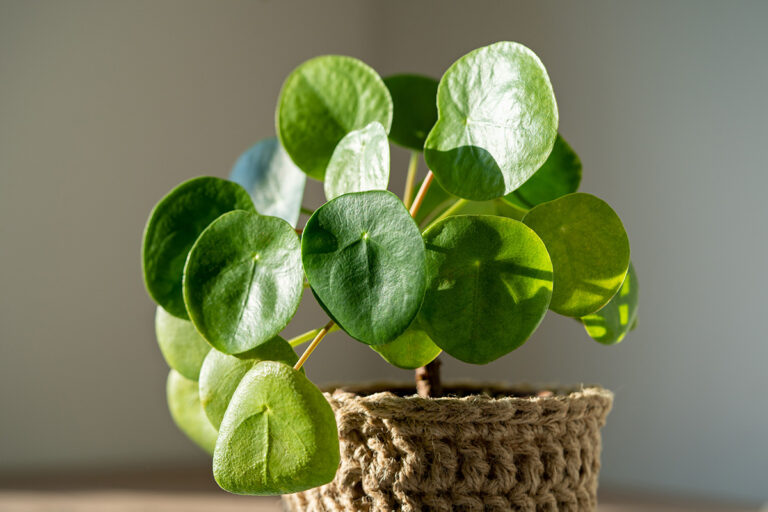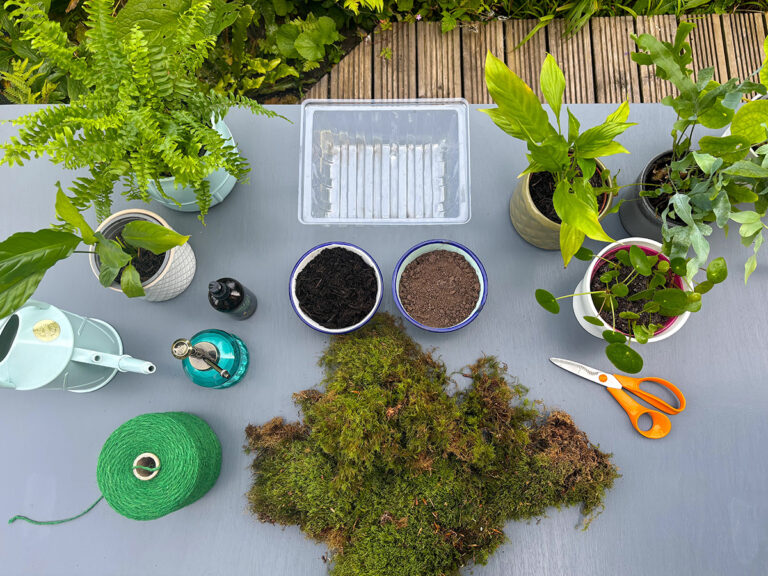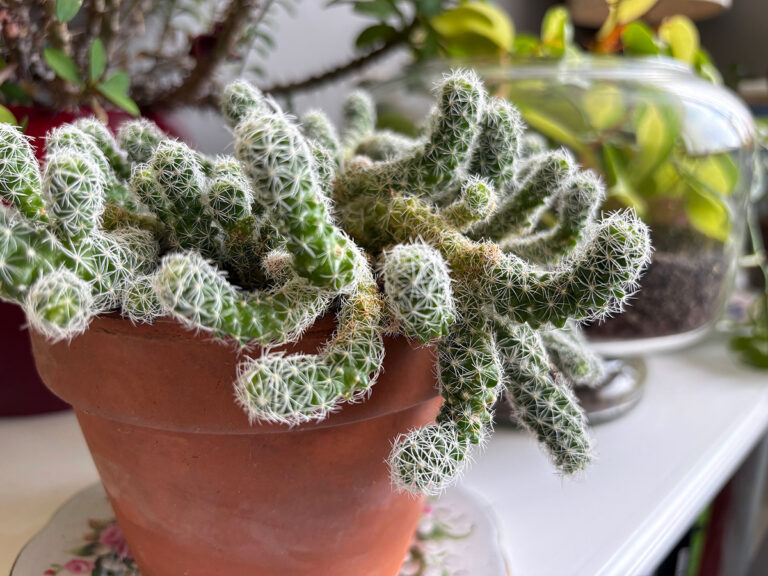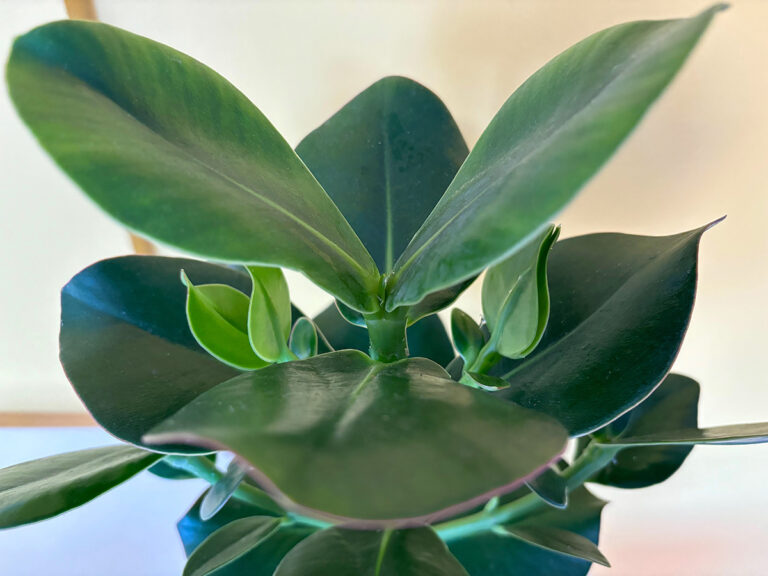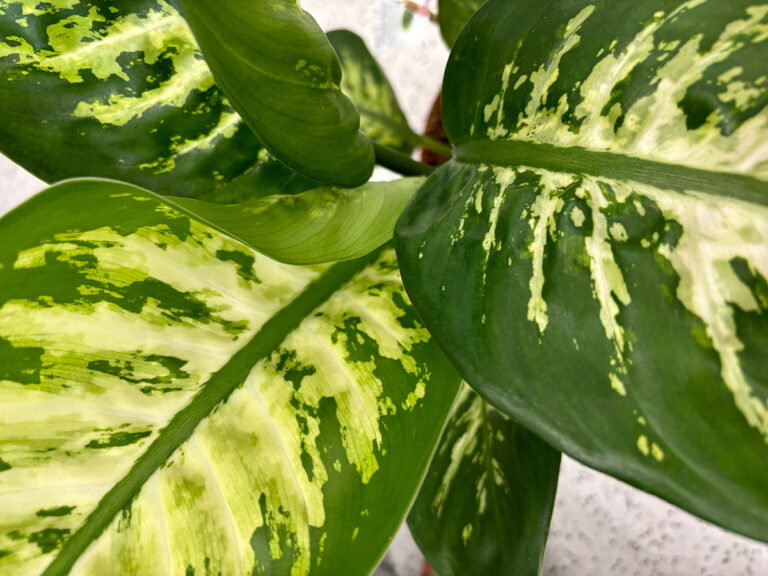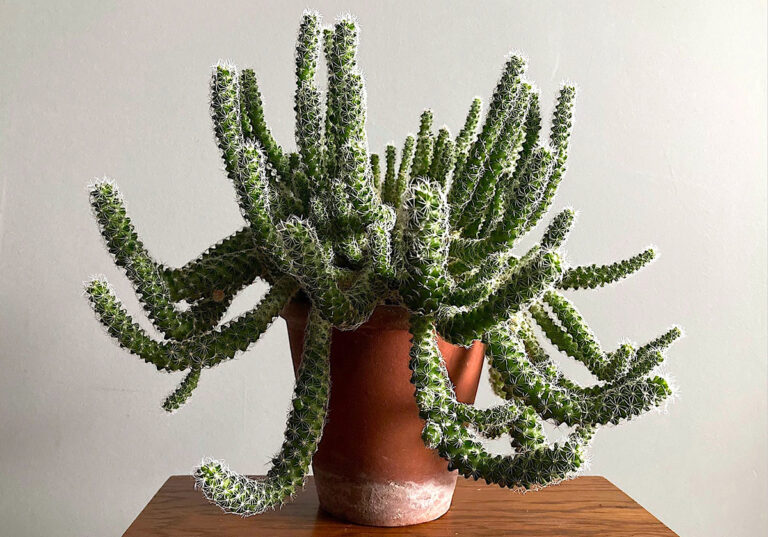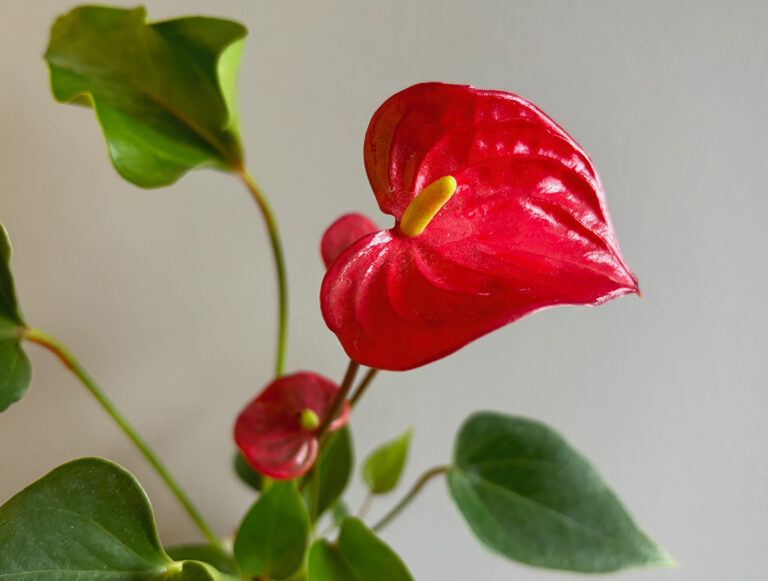A terrarium is an indoor container garden which can be sealed or open; they are ideal for slow growing plants with interesting foliage. Container choice will influence your choice of plant. Open terrariums allow condensation to evaporate and are less likely to attract fungal diseases but closed environments create greater humidity and their own ecosystem. Cacti and succulents are not fans of humidity or wet soil so plant separately or make a soilless air plant terrarium as a contemporary stylish design for the home. But what plants are suitable for a traditional terrarium? With a bit of care, ferns, pothos, pilea, peperomia, streptocarpus and fittonia will thrive.
What tools do I need?
- A teaspoon, table spoon, tongs or mini trowel
- Pencil or chop stick
- Garden snips
- Spray bottle to mist plants
What materials do I need?
- A glass container, sealable or open
- Clay pebbles, gravel or small stones
- Activated charcoal (for closed terrariums)
- Moss (optional)
- Suitable terrarium plants
- Sterile potting compost
- Decorative features (optional)
Terrarium containers come in all shapes and sizes. You can buy a purpose-built fancy glass terrarium or use a mason jar, vase or fish bowl; you may find you have glass jars or pots around the home that can be repurposed like a jam jar.

Terrariums lack drainage holes so we have to create the drainage space. Line the base of your container with small stones or clay pebbles (also known as LECA, lightweight expanded clay aggregate), which absorb excess water and stop water pooling at the bottom; this prevents sitting water which could rot roots, then top with activated charcoal. Activated charcoal is particularly important in a closed terrarium but not essential for open systems.
Activated charcoal acts as a filtration system which soaks up toxins and impurities such as gases and contaminants. This charcoal has been exposed to high heat which increases its porous properties. It can be easily purchased online or at a nursery. Don’t panic if you haven’t got any, just crack on planting up but monitor the health of your terrarium.
Next you can add an optional layer of moss or thin flat slate; as well as looking cool this provides a natural barrier between the drainage medium and potting soil and hinders the soil falling through into the drainage material below. Look out for moss in your lawn, this may save you having to buy it. Sphagnum moss is often used as it has tremendous water retentive properties. I worry about the environmental issues around buying sphagnum moss so why not grow your own and harvest when you need it.
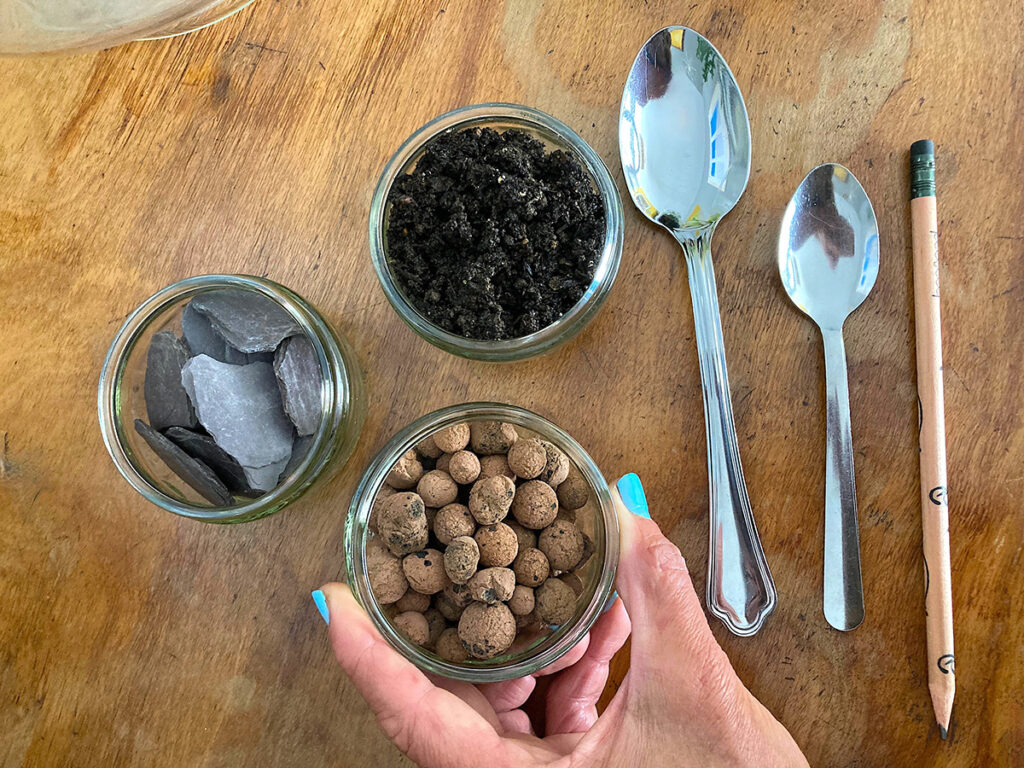
Use sterile compost. A houseplant compost is ideal or cacti and succulent mix. If you want to increase aeration make up your own mix and add orchid bark, coir or perlite. Make sure you leave enough space for plants to fit and grow without reaching the top of the container.
Revel in the fun of choosing which plants to include in your homemade mini tropical forest. You may find you can divide some existing houseplants to re-home in your terrarium. If using moss, be aware that not all mosses will survive in a terrarium, pincushion moss also known as bun moss works well, as do broom fork mosses.
Plant your plants by hand or use a mini trowel, tongs or spoon to ease them into difficult to reach places. Make space for the root ball then lower the plants in and firm them into place.
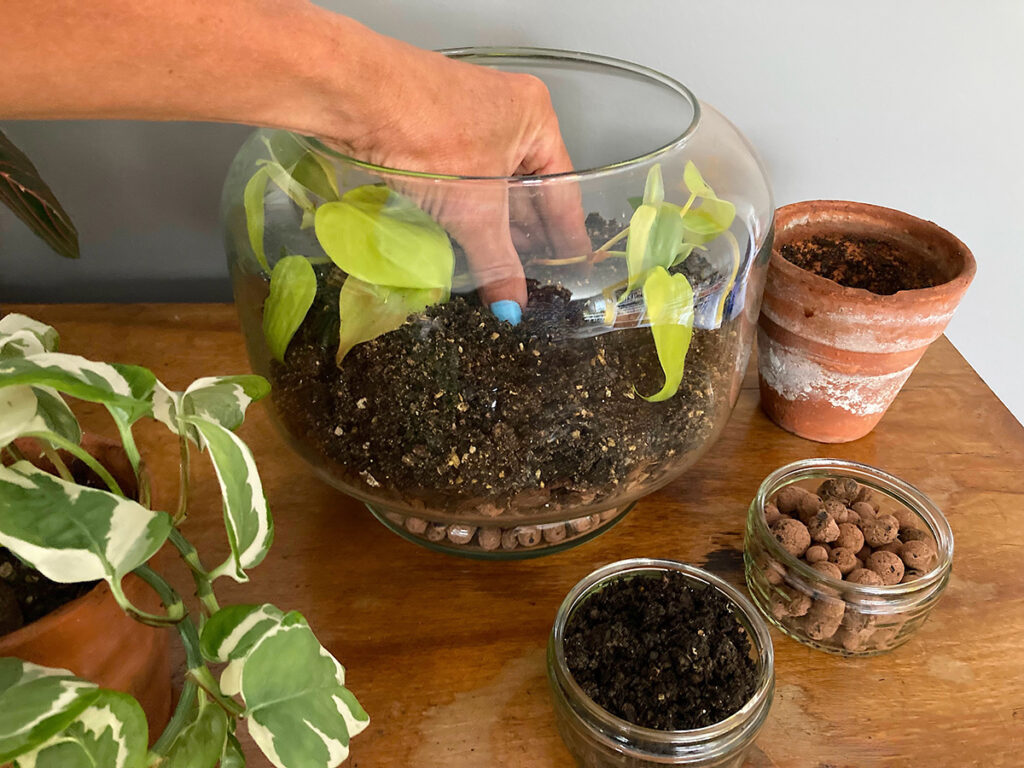
Only water when the soil feels dry and mist regularly. If your terrarium gets soil-covered sides then simply wash them down by spraying water. If you have a closed terrarium then the system should be relatively self-sustaining but intervene if it looks too wet or dry and once a week open up the lid, this will allow air to flow and keep your plants thriving.
How you personalise your terrarium is up to you; leave it as a pure plant display or decorate with rocks, shells, crystals even sculptures or figurines like lego figures. Terrariums are fun to make and are a great way to get kids gardening.
Terrariums need indirect sunlight so a north facing window or skylights are perfect; plants can easily photosynthesise but they will not get scorched. In their natural environment many plants used in terrariums crawl along rainforest floors and are shaded under a canopy of larger plants so this is the atmosphere the terrarium is trying to recreate.
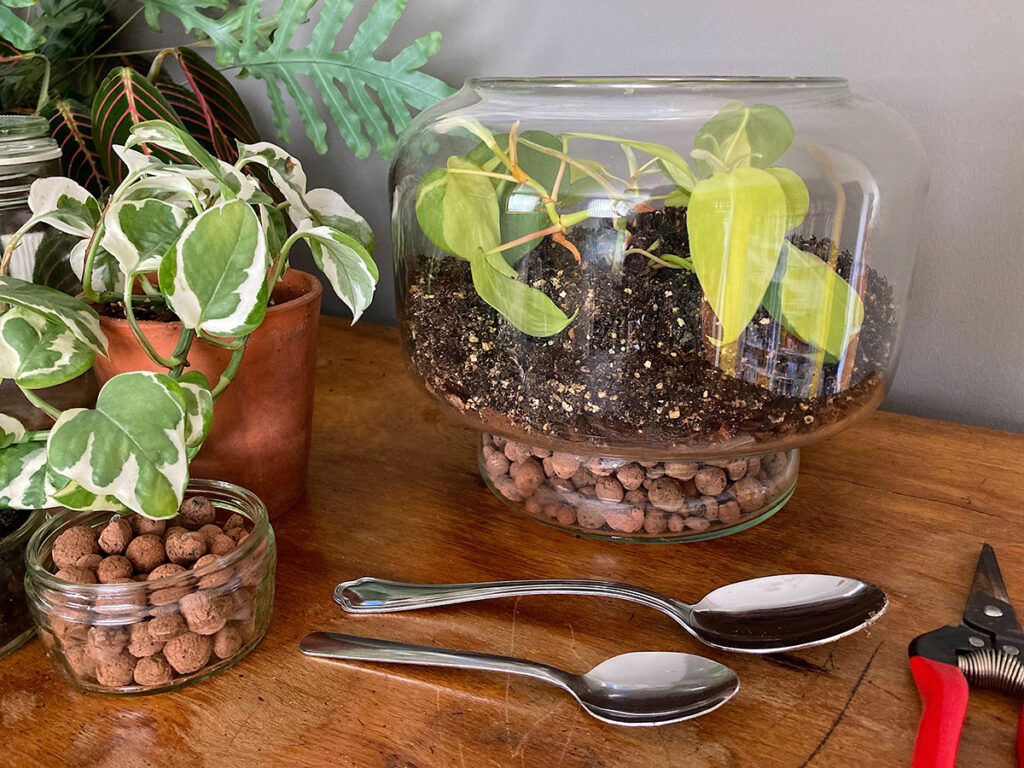
Enjoy making your very own unique mini ecosystem; hopefully you will find it an immensely satisfying, mindful experience. Why don’t you post and share your makes? Don’t forget to tag us in! @plantsmithuk


